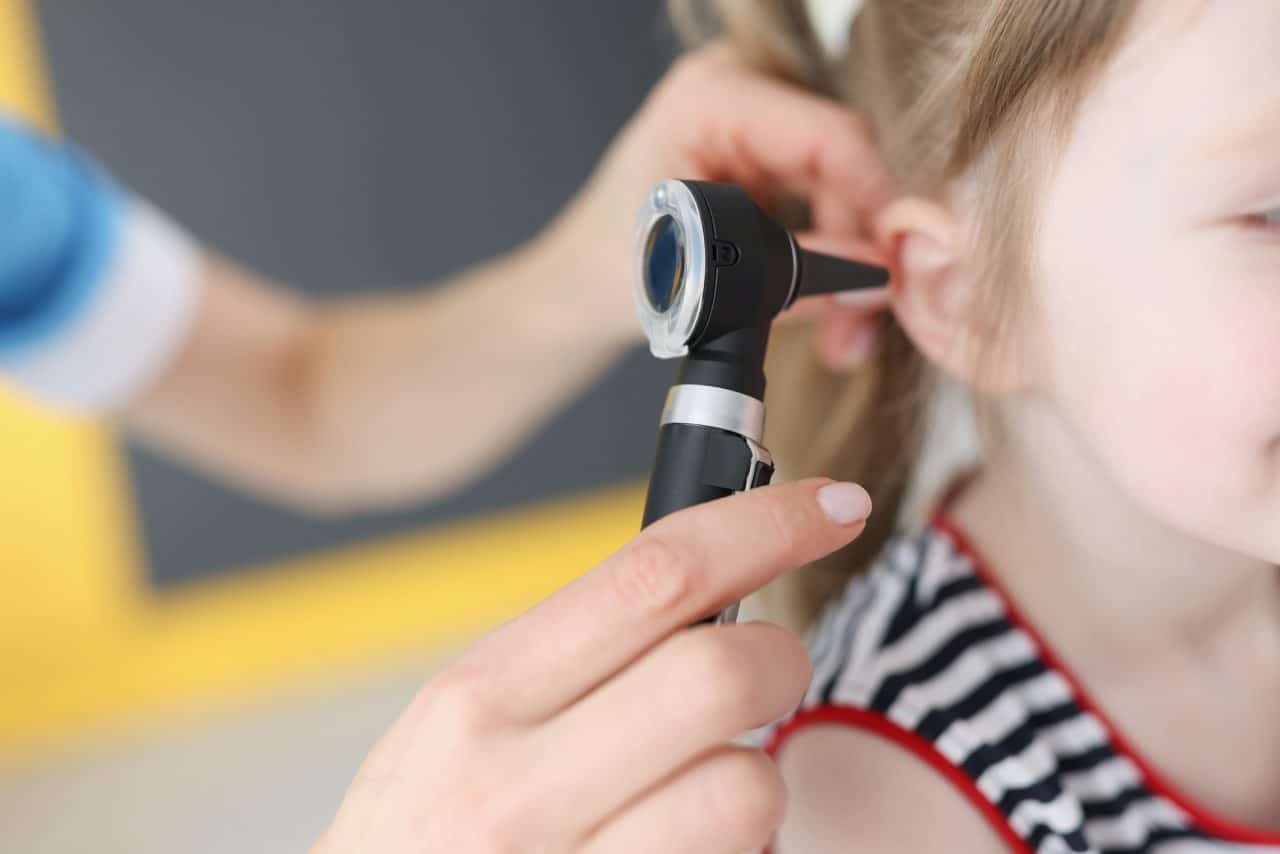Glue ear occurs when your middle ear fills with a thick, glue-like fluid. It is much more common in children than in adults. While it often clears up on its own, glue ear has the potential to lead to complications like infection and even hearing loss.
When it becomes an infection, glue ear is also known as otitis media with effusion (OME). OME is one of the most frequent infectious diseases in children and is the most common cause of acquired hearing loss in childhood.
Symptoms of Glue Ear

Hearing difficulty is the most common symptom in children, especially if it has not yet turned into an infection. If your child has glue ear, you may notice that they
- Talk louder than usual
- Don’t respond to you when you call their name at home or when on the playground at Hollywood Park
- Complain about a ringing or buzzing in the ear (tinnitus)
- Turn the volume up on the TV or tablet
- Need others to repeat themselves
- Can’t hear noises that are far away
If your child has an ear infection, they may also experience fatigue, fever, ear pain and ear drainage.
Is My Child at Risk for Glue Ear?
Children between the ages of 2-5 are more likely to develop the condition than older children. This is because younger children have narrower Eustachian tubes that are more easily clogged. Additionally, your child may be more at risk if they:
- Have seasonal allergies
- Come down with a cold or respiratory infection
- Are exposed to poor air quality or tobacco smoke
- Have certain conditions that affect the function of their eustachian tubes
Treating Glue Ear
Depending on factors like symptoms, severity and duration, several treatment options are available. These include:
- Observation. Glue ear often goes away on its own in a few months. Active observation is a common first step in children whose prognosis is good.
- Antibiotics. Medication will likely be given if your child has an infection to prevent complications.
- Hearing aids. These are used while your child’s condition clears to help prevent developmental delays in speech and language that may come from temporary hearing loss.
- Auto-inflation. During this treatment, a child blows up a special balloon using each nostril. The pressure can help open up the eustachian tubes and allow for drainage.
- Surgery. In cases of severe or persistent glue ear, your doctor may recommend surgery to remove the adenoids.
If you would like more information or to schedule an ear exam for your child, contact Palmetto ENT & Allergy today.
